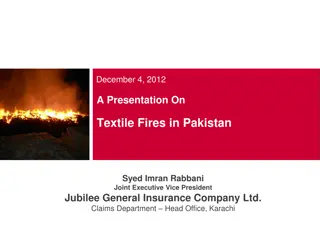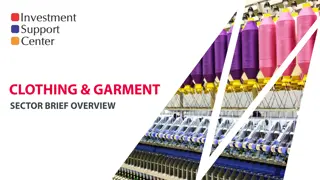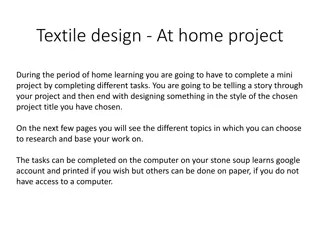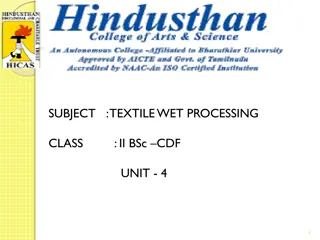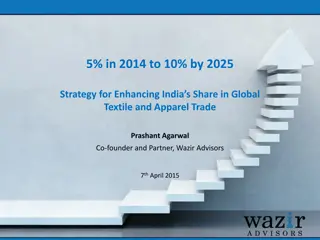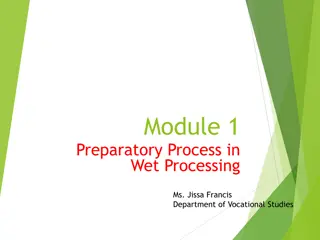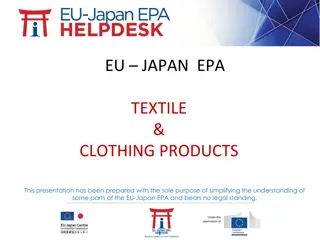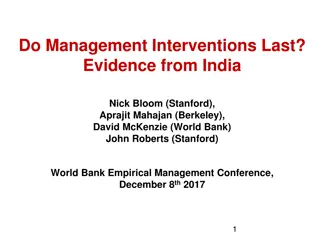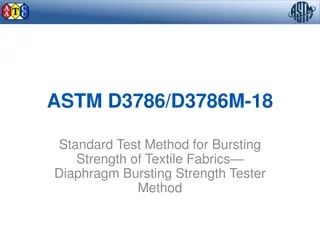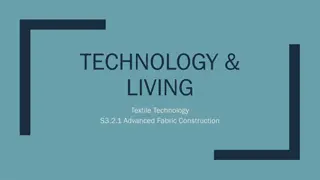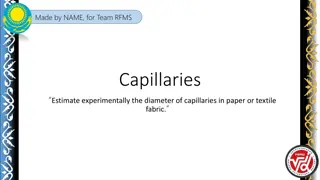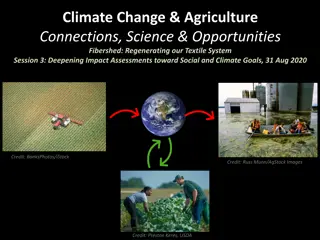Exploring Textile Design: Sources and Techniques
Dive into the world of textile design with a variety of sources for inspiration and key techniques to enhance your creations. Learn how to analyze different sources, create textile samples, sketch initial ideas, and refine your work through evaluation and experimentation. Discover the endless possibilities within textile design and unleash your creativity!
Download Presentation

Please find below an Image/Link to download the presentation.
The content on the website is provided AS IS for your information and personal use only. It may not be sold, licensed, or shared on other websites without obtaining consent from the author. Download presentation by click this link. If you encounter any issues during the download, it is possible that the publisher has removed the file from their server.
E N D
Presentation Transcript
Next Steps. Using a source Keywords to use in your analysis What is a source? Once you have analysed a source what do you do next? Here are some ideas: Form Tone Texture Shape Pattern Decoration Repetition Scale Structure Aesthetics Style Process Trend Connotation Textile Technique Movement Colour Line A source can be absolutely ANYTHING you are inspired by! Below is an example of different sources you might include in your sketchbook: Complete a textile sample, using your source as inspiration Do some initial idea sketches, using your source as inspiration Compare 2 different sources in your sketchbook using a VEN diagram GCSE Textiles A01 A Theme Mind Map Mind map all the things you can think of relating to your topic! Include images if you want to. Mood Board Collect images linked to your theme into a moodboard annotate keywords about the images / theme. Artist / Designer Analysis Look at an existing artist or designer and complete an analysis of their work Take your own photographs You can use your own photos as a source of inspiration! Annotate them explaining how they link to your theme. Useful websites to find Textile Artists and Fashion Designers https://www.textileartist.org/ Develop ideas through investigations, demonstrating critical understanding of sources https://www.patterndesigners.com/top-10- textile-designers-2017/ Key Points to Remember How to Analyse a Designer / Artist: https://www.dexigner.com/directory/cat/Textile- Design/Designers There is a difference between Analysing and Stating. Analysing will always get you more marks that stating. Introduce the work of your designer or artist (key facts only), how does their work fit into trends at the time it was produced or current trends? Are there any social, environmental, moral, issues surrounding your designers work? Consider what key features appear regularly in your designers work, why might that be? What colours do they use a lot of? What effect does this give? Who do you think their designs are aimed at? Why? Explain what you like / dislike about the designs and why that is. What techniques has the designer used? Why? Could different techniques be used to create different effects? How will this designer inspire your work? How does the designer fit into the theme? What techniques will you sample? Why? https://www.msn.com/en-us/money/other/30- most-influential-fashion-designers-of-all-time/ar- BBNNj6y Denotation: Literally stating what something is Connotation: Explaining the meaning of something, what it connotes. https://sewguide.com/famous-fashion-designers/ See the below example: https://pahaldesign.com/10-best-fashion- designer-of-world/ https://www.textileartist.org/10-contemporary- embroidery-artists This is a pink heart. It connotes, love and friendship
Next Steps. Using a sample Key Textile Techniques to try What do I do to meet the assessment objective? Once you have completed a sample what do you do next? Here are some ideas: Applique Batik Beading CAD Couching Embroidery Felting Knitting Macram Mola Patchwork Pleating Printing Quilting Ruffles Smocking Suffolk Puffs Tie Dye Weaving 3D Shibori Use the words in the assessment objective to help you understand what it is you should do: Cut the sample in half keep one half as the original and develop the other half with a different technique Sketch an initial idea to show how you would use this sample in your work Evaluate your sample to help you refine your ideas and techniques Refine work: Quality over Quantity! Refine work by going back to old samples and developing them to make them better. Refine work by comparing samples and evaluating to see what works and what doesn t. Explore Ideas: This can be as a sketch or textile sample, try to create the idea in your head it doesn t matter if it doesn t work it s a sample! Experimenting with appropriate media, materials and techniques practice creating samples using a range of different techniques, make sure you know how to them using the correct materials. Don t be afraid to experiment and combine different techniques to see what effect they give! Think outside of the box. GCSE Textiles A02 Refine work by exploring ideas, selecting and experimenting with appropriate media, Useful tutorial websites to help with samples materials, techniques and processes. http://www.embroidery.rocksea.org/reference/pi cture-dictionary/ Key Points to Remember How to Evaluate a sample: Growth Mindset! https://www.ritdye.com/techniques/ What have you done? What techniques did you use? What inspired you? How does it relate to your theme? How have you done it? What did you like / dislike about the technique? Was it successful? Why / why not? How could you improve? What else could you try? Is there anything you would change? Why? How will you develop your work now? If a sample goes wrong, THAT IS FINE! this is why we sample, just remember to evaluate it and next time we can do things differently https://www.theweavingloom.com/beginners- guide-to-weaving/ https://rosiepink.typepad.co.uk/rosiepink/tutorial -how-to-make-flat-felt-wet-felting.html https://www.polkadotchair.com/45-beginner- quilt-patterns-tutorials/ https://mypatchwork.wordpress.com/2014/07/2 6/41-fabric-manipulation-tutorials/
Next Steps. Developing Ideas Media you can use to record ideas (or anything else you can think of!) How can I record my ideas? Once you have recorded your ideas, what do you do next? Recording ideas is really important to show your teacher and the examiner your thought process and development. Here are some ways you can record ideas: Design ideas / drawing Insights / written annotation Design ideas develop design ideas by varying aspects e.g. size, shape, features etc. Observational sketches use the sketches to develop a repeat pattern Take photographs annotate your photos when they are stuck into your book Annotation underline any key points you have made / keywords to make it easy for the examiner to identify Pencils Collage Watercolours Paints Chalk Pastels Charcoal Fineliners Pen Artist Markers Photoshop (CAD) Photographs Design Ideas Draw out your design ideas, they should be clearly inspired by your samples or sources. Annotate these to explain parts of your designs Observational drawing Sketching objects that relate to your theme can help inspire design ideas especially when creating patterns Take photographs take photos of sources for inspiration or take process photos when you are making samples as evidence. Annotation Annotation, ensure you annotate to explain your thoughts, this does not need to be a lot of writing, sometimes you might just bullet point! Written pen / pencil Bullet points / key words / paragraphs Typed up on the computer GCSE Textiles A03 Record ideas, observations and insights relevant to intentions as work progresses. Useful tutorial websites to help you with drawing Key Points to Remember How to annotate a design: https://www.youtube.com/watch?v=nXKFBA0xeYQ# Any design ideas you do should CLEARLY link back to AO1 and AO2. What textile techniques have you used in your designs? Why? How does it link to the samples you have done? Is you design inspired by any of your sources? How? Why? What materials would you use? Why? How does this design link to your theme? What developments would you make to your designs? Why? https://www.youtube.com/watch?v=r1idghDW8KY All designs should show how your sources have inspired them include this in your annotation https://www.youtube.com/watch?v=U68FvwHaOoE https://www.idrawfashion.com/friday-tips/ All designs should include AT LEAST three different textiles techniques that you have sampled. https://www.mybluprint.com/article/drawing-folded-or-draped- fabric-is-an-art-heres-how-to-crush-it-in-a-few-easy-steps https://www.idrawfashion.com/clothes/textiles/
Next Steps. Creating a final piece How can I meet this Assessment objective? Ways of showing a personal response Though you can demonstrate AO4 throughout your sketchbook, a final piece will help you secure marks. Creating your own designs Developing your designs Creating a sample inspired by a source Creating a developed sample inspired by a combination of sources Producing a final piece (fashion or interiors) Use the words in the assessment objective to help you understand what it is you should do: Make sure you have developed you design ideas Select the design you would like most to make Sketch out your final design, planning what techniques you will use where Plan your making step by step to make it Personal and meaningful response Your response to a source should be personal to you. What your feelings and reactions are. It must be meaningful by relating to your source inspiration. Make sure everything links and is not random. Demonstrates understanding of visual language being able to combine different textures, colours, techniques in an aesthetically pleasing way. Aesthetics the way things looks GCSE Textiles A04 Present a personal and meaningful response that realises intentions and demonstrates understanding of visual language. Developed Sample: Sample inspired by a source Sample inspired by a different source Developed sample using combined techniques + = Reflection on entire project: Key Points to Remember You DO NOT need a whole project reflection, however if you have Websites where Designers talk about their work and inspiration A personal response is any response where it is your own work. the opportunity and are stuck on what to do next, it is a nice touch. Sometimes it is difficult to come up with a personal response! The below links show some designers talking about their design and inspiration process. Seeing how they come up with their ideas, might help you come up with your own. It is not just your final piece, it is all individual work throughout your folder What was your initial theme and how were you inspired by it? How did you begin your research? Why? How do your samples reflect your own ideas (i.e. your personal response) What would you do differently? Why? If you were to develop this theme / project, how would you do it? Why? https://fashionunited.uk/news/fashion/10-fashion-talks-to- watch/2018102239556 You can be inspired by designers but don t copy them, because this is not personal i.e. your own work. https://www.designboom.com/design/interview-with-fashion- designer-carla-fernandez-05-14-2014/ Record the step by step process of creating any developed sample final piece you can do this with photographs or sketches https://www.instyle.com/awards-events/fashion-week/new- york/fall-2017-designer-inspiration



